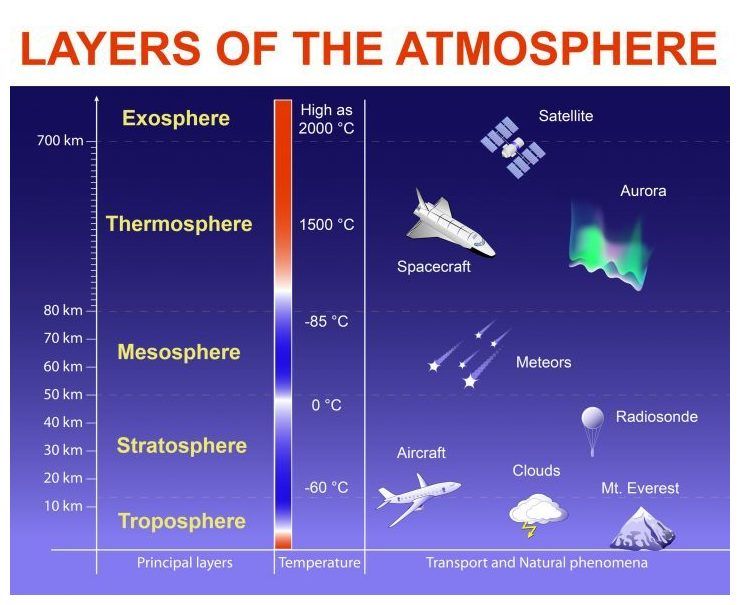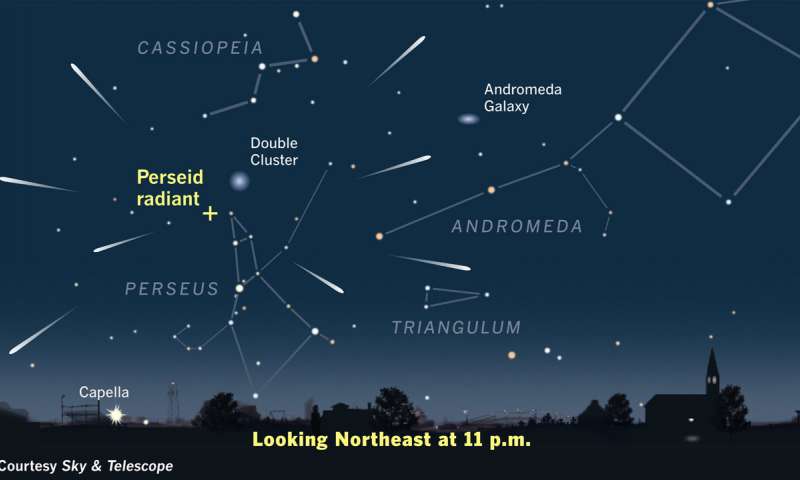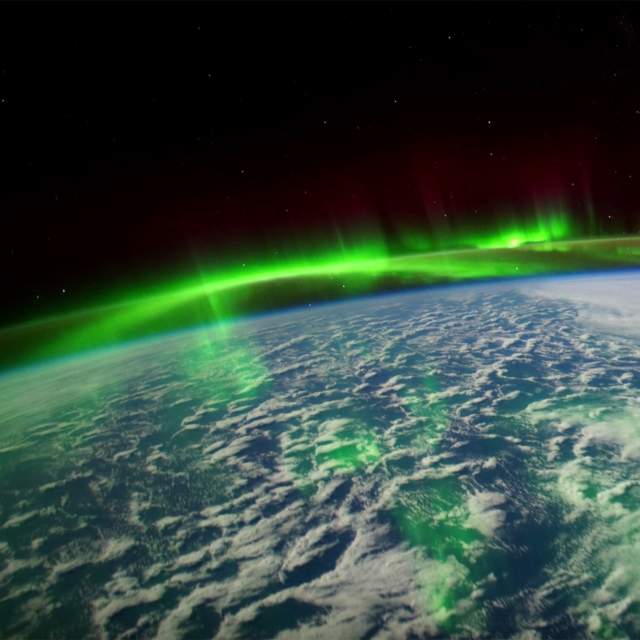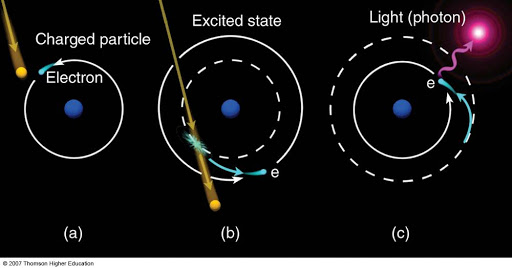70 Falmouth Street Portland, Maine 04103
43.6667° N 70.2667° W
Altitude: 10 feet below sea level
Founded January 1970
Julian Date: 2458973.16
2019-2020: CXXXIX
THE DAILY ASTRONOMER
Monday, May 4, 2020
Remote Planetarium 26: Space Weather
______________________________________
If you find Spaceweather intriguing, I would highly recommend consulting the brilliant web-site www.spaceweather.com. __________________________________
Famed British astronomer Fred Hoyle (1915-2001) once said "Space isn't remote at all. It's only an hour's drive away if your car could go straight upwards." Indeed, the Karman Line, the boundary separating Earth from space, is merely 100 kilometers (62 miles) above sea level. The inconceivably vast region collectively known as "outer space" begins at this demarcation. Below and above we define the "space weather area," the high atmospheric layers within which those phenomena we call space weather occur.
Although we'll be infiltrating the meteorological sphere by doing so, let's begin today's class with a tour of Earth's atmosphere.

- TROPOSPHERE Our true home, the troposphere is the lowest and thickest atmospheric layer. The troposphere extends from the planetary boundary layer, the lowest region where frictional interactions with the planet's surface affects airflow, to the tropopause, the boundary separating the troposphere and the next layer, the stratosphere. The altitude of the tropopause varies with latitude: 59,000 feet at the tropics; 56,000 feet at the mid latitudes and 20,000 feet in the polar regions. As the troposphere contains seventy five percent of the atmosphere's mass, almost all weather phenomena occur within it. We humans can only live within this layer which provides us with abundant oxygen and keeps us at the comparatively high atmospheric pressure to which our bodies have become accustomed. Within the troposphere temperature and density decrease with increasing altitude.
- STRATOSPHERE The second major atmospheric layer extends up to an altitude of 50 kilometers above Earth's surface. Along its lowest region one would find commercial aircraft and the tops of extremely high cumulonimbus clouds. The stratosphere also contains the famous ozone layer. Ozone is a molecule containing three oxygen atoms. The molecular oxygen on which we rely consists only of two. This ozone layer serves as a protective shield against most of the Sun's ultraviolet radiation. In the stratosphere, temperature increases with increasing altitude.
- MESOSPHERE. Deriving its name from the Greek word "mesos" for "middle", the mesosphere extends between 50 - 80 or 100 kilometers above Earth's surface, depending on the season and latitude. Within the mesosphere temperatures decrease again with increasing altitude. The Karman Line corresponds roughly to the mesopause, the boundary separating the Mesosphere and Thermosphere. It is within the mesosphere that one would encounter meteors.
- THERMOSPHERE Here is where the ions are made by the solar photodissociation of molecules by ultraviolet light. These ions scatter throughout the ionosphere, which extends from the upper mesosphere into the exosphere. As the thermosphere extends above the Karman line, most of this atmospheric layer is technically in "outer space." The upper levels of the thermosphere reach up to 500 kilometers. This layer is called the "thermosphere" because of the high temperatures, such of which exceed 2,500 degrees C. However, one would still be cold in this layer because molecular collisions are so infrequent It is within the thermosphere than aurorae occur.
- EXOSPHERE The uppermost atmospheric layer and the one about which scientists know little. This highly rarefied region consists primarily of the lightest gases hydrogen and helium with trace amounts of carbon dioxide and oxygen. There is no sharp boundary separating the upper exosphere and the region above it.
Today we'll discuss two main types of "Space weather:
- Meteor showers
- Aurora Borealis
Due to space constraints, we will be discussing potentially hazardous asteroids at another time.
METEOR SHOWERS
Let's begin with three definitions.
- Meteoroids: particles in outer space flaked off from comets or asteroids. These are meteoroids when suspended in outer space.
- Meteors: the lights we see when meteoroids infiltrate the upper atmosphere (between 250,000 - 330,000 feet)
- Meteorites: fragments of meteoroids that survived the descent through the atmosphere and are found on Earth's surface
Meteors are not exactly rare. Millions of meteoroids descend through the atmosphere each day. Due to atmospheric light scattering, only those meteors that appear at night are visible. On any given night one can see a meteor every 6 - 10 minutes on average. During certain times of year, however, we will experience meteor showers. These showers occur when Earth passes through a stream of meteoroids generally cast off from comets. While these showers can last for weeks, they each have a peak date on which the greatest number of meteors will be visible. We can estimate this number based on a value called the Zenithal Hourly Rate (ZHR). This value refers to the number of meteors a seasoned observer would see in a completely dark sky if the radiant were at the zenith.
- radiant: the apparent point from which meteors appear to originate
- zenith: point directly overhead
As the amount of atmospheric gases between an observer and outer space is minimum at the zenith, obscuration is also at a minimum at this location. As most observers will not see the radiant at the zenith or in a completely dark sky, the number of meteors one might observe per hour can be significantly less than the ZHR value.
Meteor showers are generally named for the constellation (or sometimes the star) from which the associated meteors appear to originate.
The major meteor showers:
- Quadrantids: named for the now obscure constellation Quadrans Muralis, the Quadrantids appear to emanate out of the region around the boundary connecting Bootes and the Big Dipper. The peak occurs around early January, but generally produces about 20 - 25 meteors an hour on peak night, The parent object, defined as the object which produces the associated meteoroids, is unknown. It might be Comet C/1385 U1
- Lyrids: appearing to emanate from the constellation Lyra the Harp, the Lyrids peak in late April. Produced by remnants of Comet Thatcher, the Lyrid shower is slightly more active than the Quadrantids with an hourly peak rate of 30 - 35.
- Perseids: peaking in mid August, the Perseids appear to emanate from the constellation Perseus. This is one of the year's most active showers with an hourly rate exceeding 60. The parent comet is Swift Tuttle
- Orionids. The late October shower. Appearing to originate in the constellation Orion, the Orionids produce 30 - 40 meteors an hour. Perhaps the most interesting aspect of this shower is that its parent body is the famous Comet Halley.
- Leonids The mid November shower. These particles emitted from the Comet Tempel-Tuttle appear to originate from the constellation Leo the Lion. As the parent comet follows a 33 year orbit, this shower can flare into a storm or a very active shower every 33 years. We're not expecting such a flare up anytime soon as the late once occurred in 2001. Can produce 80 - 100 meteors an hour
- Geminids. The mid December shower. This shower is unusual in that its parent body might by the minor planet 3200 Phaeton, as opposed to a comet. This shower produces 30 - 50 meteors at peak and appears to emanate from the constellation Gemini,
Note: these emanation directions are illusory. Meteors travel in parallel paths relative to Earth.
Second note: It is best to watch for meteors after midnight, the time at which our part of the planet is moving into the meteoroid stream.
AURORA BOREALIS:
Though it was Galileo himself who coined the term "aurora borealis," meaning "northern dawn," he was unable to explain why glowing lights occasionally appeared in the northern sky. We now know that charged solar particles produce this light by interactions with atmospheric atoms.
These ejections produce copious outflows of plasma from the Sun's outermost layers. Once reaching Earth, these charged particles encounter Earth's magnetosphere which directs them toward the magnetic poles.
Aurora as seen from the International Space Station.
These charged particles "excite" atoms and molecules within the upper atmosphere (90- 150 km above Earth's surface.) Excitation occurs when the atoms absorb a specific amount of energy that elevates them into higher energy levels. When an excited atom settles back to its original state, it will emit a visible light photon with an energy equal to the energy it originally absorbed. These emitted photons comprise the aurora light we see. Different gases produce different colors.
- Excited oxygen atoms generally produce a greenish-yellow or red light,
- Nitrogen emits a bluish light.
As the magnetic pole is at such a high latitude, the aurora are generally restricted to regions surrounding it. At times, a powerful coronal mass ejection can produce aurora along areas quite distant from the magnetic poles.
To subscribe or unsubscribe from the Daily Astronomer:





